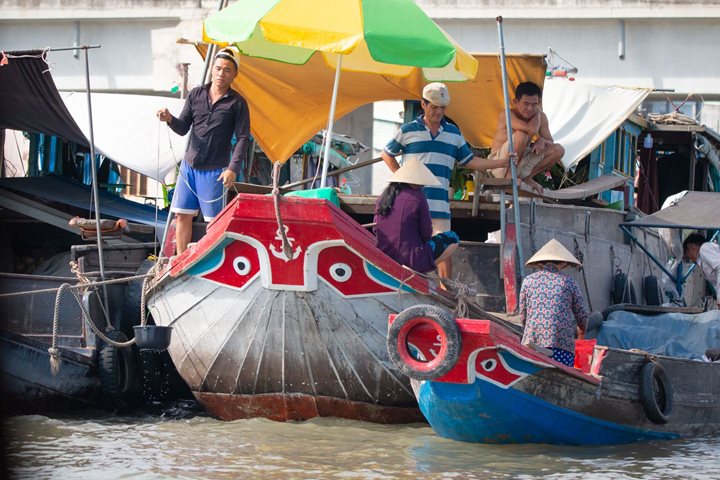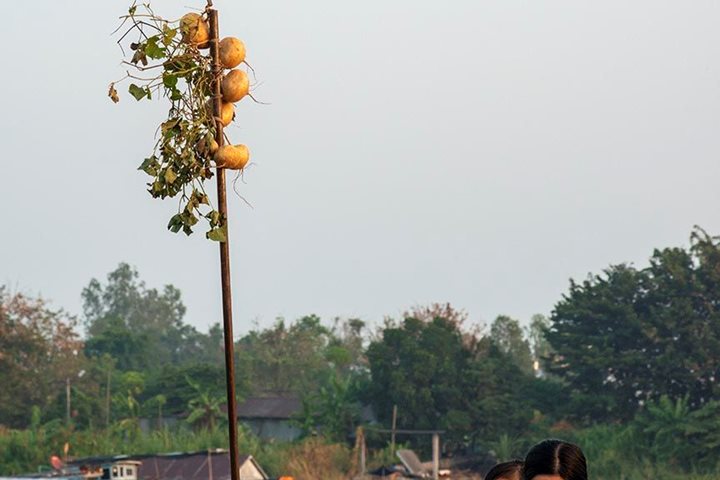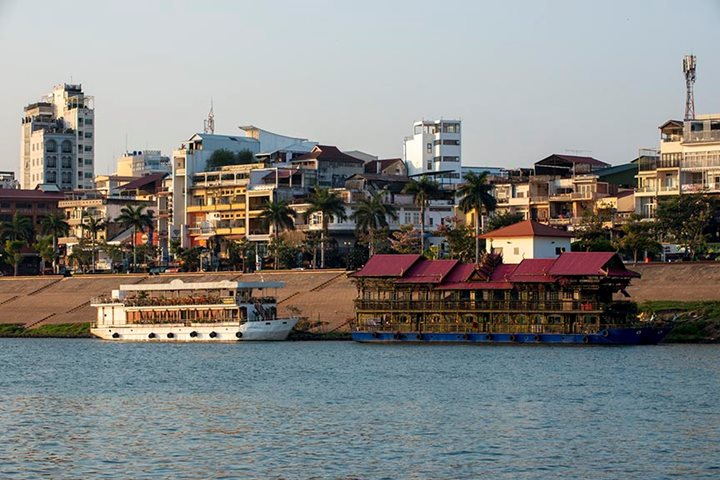A Cambodian sunrise comes on soft like a gentle tap on the shoulder. Transferring from the MV Jahan to the river’s edge we embraced the living history that is the Mekong way of life. One by one, guests climbed aboard ox-pulled carts (yes, I said ox carts!) for a 2km journey to Kampong Tralach Village.
The pride in the faces of our Cambodian drivers reflected that this was indeed a life experience for all parties save the ox. Rhythmic claps of hooves over packed earth filled otherwise tranquil rice fields. Verdant greens and earthly hues of grains ready for harvest delighted on all sides but one: a glance over the shoulder brought me eye-to-ass with a beast from the Khmer period and a tangible reminder that not all fuel is combustible.
A short tug on the nostrils and the carts came to a halt. With local guides in the lead, we walked between planted fields for an intimate portrait of the crop around which empires rose and fell. I reflected on the many times I had looked past the familiar fields in search of anything resembling scenery. Mine had been a love/hate relationship with the cultured seeds: loved in rice pudding; despised for the native forests they replaced.
Taking a knee I became small in the presence of the plant that ushered in civilization. Planted hand over hand in family plots by our ox-cart drivers the sprouting seeds were nothing less than working members of their family.
Trading the slobber and distemper of oxen for the five-star Jahan, we continued our journey downriver to Kampong Chhnang. After a short minibus ride we arrived at a village home to artisans famous for their Khmer-style pottery and sugar palm products. Our host had survived the Khmer Rouge only to return to a house site burned to the earth. Through the simple act of gathering clay from a nearby mountain, she created more than just time-honored pots, but the dignity of a life reborn. Circling the clay as fast as her 60-year-old frame could muster, she became her own wheel as earth and sand transformed into a vessel whose lost shards have come to define entire eras.
A highlight of our visit came with an introduction to a Mr. Li, the Flying Walenda of Aundung Russey Village and one of the last palm climbers in the region. With more trees in his yard (seven) than teeth in his grin, Mr. Li began his ascent of the 100-foot palm. At an age when most Westerners are settling in for retirement, he disappeared into the high reaches of the fronds to the astonishment of expedition guests below. With a squeeze here and a chop there, he returned to the earth with a sugary elixir that would soon become 75-proof palm wine.
Expedition guests toasted their hosts with the finished product –shot glasses filled with Cambodian moonshine—and thus came the end to a day that will live on in stories and photos for years to come.







